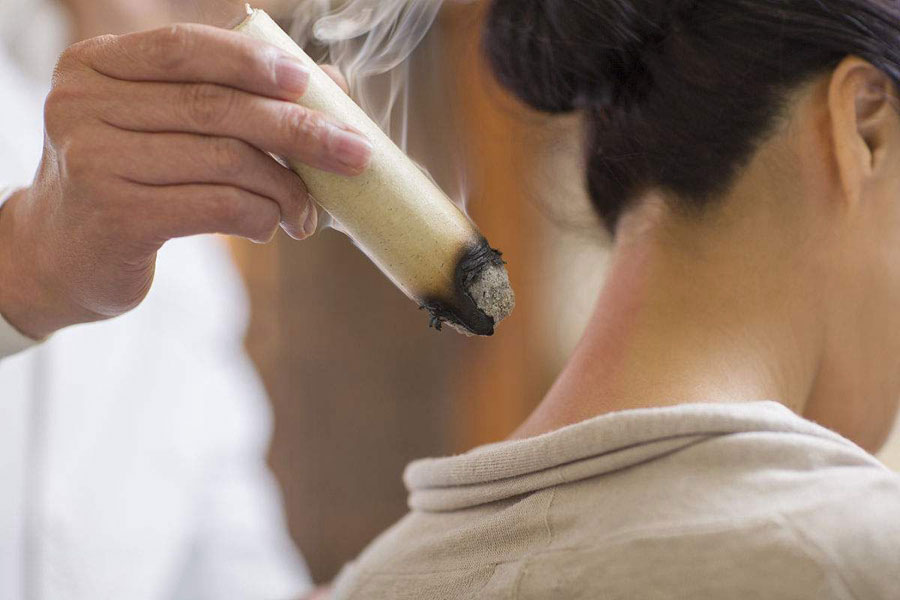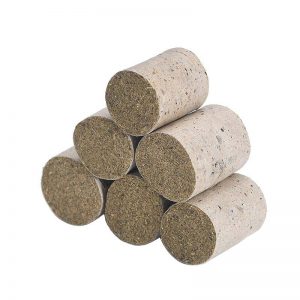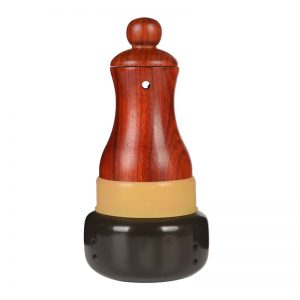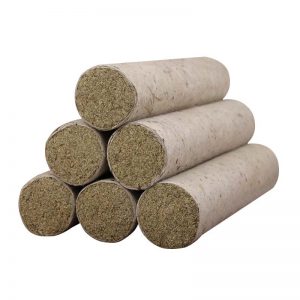Cervical spondylosis is the deformation and stenosis of the cervical vertebral canal or the intervetebral foramen, resulting in the irritation or compression of the cervical spinal cord, nerve root, and sympathetic nerve. This affects the nerves’ structures and functions. The latest opinion is that cervical spondylosis is caused by anaplasia or damage to the cervical spinal cord, resulting in ectopic compression, chemical stimulation, or immunoreaction. Spondylopathy is generally divided into six types: Neck, Nerve Root, Spinal Cord, Vertebral Artery, Sympathetic Nerve and mixed.
In TCM, Cervical spondylosis falls under neck bì, and can involve deficiency or excess. In the excess type, external pathogens or trauma block the movement of qi and blood to cause pain, stiffness and distention of the neck. In the deficiency type, insufficiency of the liver, kidney, qi, blood, the Governing Vessel, or the sinews and bones, qi and blood will result in lack of nourishment to the brain, causing headache, dizziness, tinnitus and deafness. Cervical spondylosis is closely connected with the Governing Vessel and the Bladder meridian.
Clinical manifestations of Cervical spondylosis
1. Neck-type Physical Exam:
The pain in the neck and occiput, stiff muscles, and limited movement. X-ray shows instability and curvature of the cervical vertebrae. There are no other diseases of the neck.
2. Nerve Root-type Physical Exam:
If the disease affects the fifth cervical vertebra or above, the symptoms include pain of the neck and the shoulders, or pain of the neck and occiput with numbness of the occiput. If the disease affects below the fifth cervical vertebra, the symptoms include stiffness of the neck, limited movement, pain radiating to the shoulders and arms, numbness of the fingers, heaviness and weakness of the arms, and inability to hold objects.
3. Vertebral Artery-type Physical Exam:
Falling due to sudden dizziness, numbness, and lack of strength of the lower limbs. The patient is usually conscious. An X-ray can be helpful in diagnosis.
4. Sympathetic Nerve-type Physical Exam:
The pain of the occiput, heaviness of the head, dizziness, migraines, heart palpitations, oppression of the chest, cold limbs, hot hands and feet, and soreness and distention of the limbs.
5. Spinal Cord-type Physical Exam:
Numbness, weakness of the upper or lower limbs, and trembling of the neck and arms. In serious cases, there can be complete spastic paralysis, limited movement, awkward gait, unsteady walking, inability to leave the bed or even dyspnea.
6. Other types:
Cervical Spondylosis can also affect the esophagus, causing local compression and dysphagia. Esophageal involvement can be confirmed by barium X-ray.
6 Acupuncture points for Cervical Spondylosis
Moxibustion can treat the neck, nerve root and vertebral artery types of cervical spondylosis. The basic therapeutic principles are to invigorate blood, unblock the channels, dredge the channels and quicken the collaterals. Acupoints are chosen based on the principle that the indications of an acupoint are decided by the pathway of the channel it belongs to, and are mainly from the Governing Vessel, hand and foot taiyang channels, hand yangming large intestine channel, and the Jiaji acupoints on the neck.
1. EX-B2 Acupoints (Jiaji) on the neck
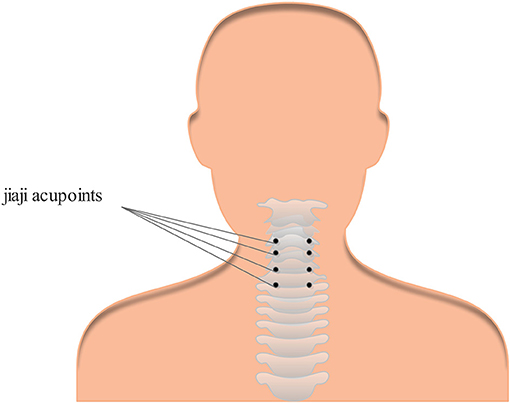
Location: On both sides of the spinal cord below the spinous processes of the cervical vertebrae, 0.5 cun lateral to the posterior midline.
Effect: Unblocks the collaterals, relieves pain, promotes joint function.
2. GB 21 Acupoint (Jianjing)
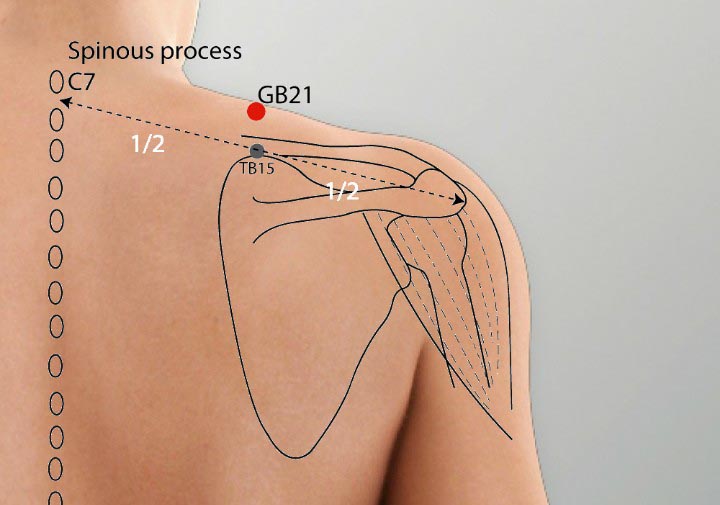
Location: On the shoulders above ST 17, on the midpoint between GV 14 and the acromion.
Effect: Unblocks the collaterals, relieves pain, promotes joint function.
3. GB 20 Acupoint (Fengchi)
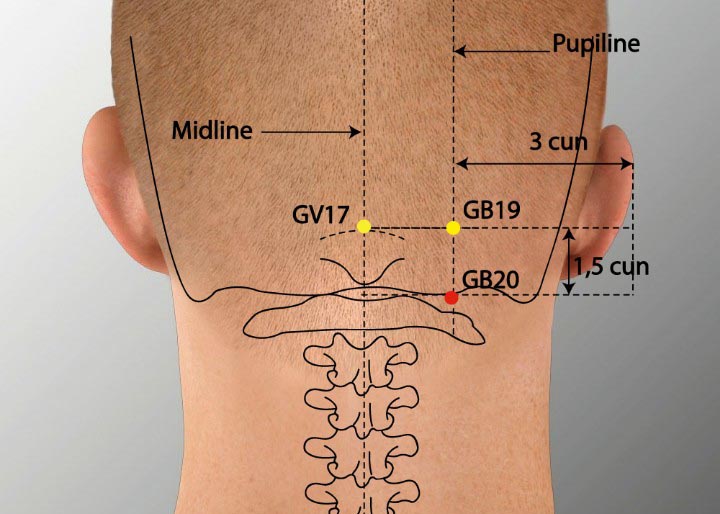
Location: Below the occipital bone in the depression between the superior-lateral trapezius muscle and the superior-posterior sternocleidomastoid muscle.
Effect: Scatters wind, releases the exterior, unblocks the collaterals, relieves pain.
4. GV 14 Acupoint (Dazhui)
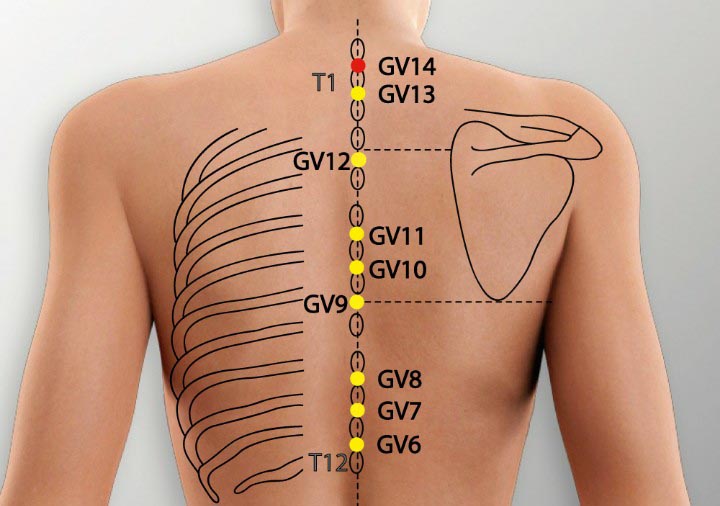
Location: On the posterior midline in the depression under the spinous process of the seventh cervical vertebrae.
Effect: Dispels wind, releases the exterior, unblocks the collaterals, relieves pain.
5. BL 13 Acupoint (Feishu)
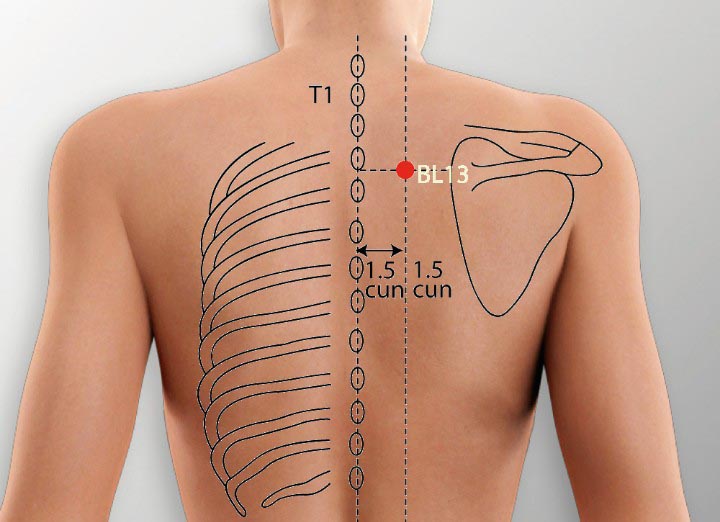
Location: On the back 1.5 cun lateral to the midline, level with the lower border of the spinous process of the third thoracic vertebrae.
Effect: Scatters wind, dissipates cold, relieves the exterior.
6. GV 24 Acupoint (Shenting)
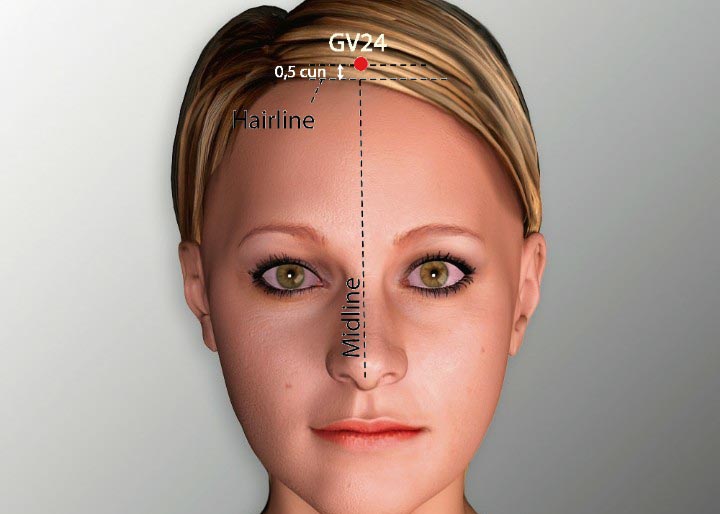
Location: On the head, 0.5 cun above the midpoint of the anterior hairline.
Effect: Extinguishes wind, unblocks the collaterals.
Moxibustion treatment methods
The first step should be to administer back-and-forth moxibustion on the area around GV 16, GV 14 and GV 9 to warm local qi and blood. Then, treat according to the disease types described below.
1. Neck type
(1) Single-point mild moxibustion on tender Jiaji acupoints on the neck. The patient should feel the heat penetrate the neck and back, expand over the area, or feel tightness, pressure, soreness, distention and pain in the neck and back.
(2) Single-point mild moxibustion on a tender point near GB 21. The patient should feel the heat penetrate the neck, back and upper arms, or feel tightness, pressure, soreness, distention and pain in the shoulders.
(3) Mild moxibustion on GB 20 and GV 14. The patient should feel heat transmitted along the Governing Vessel on the neck and back. This combination of important acupoints of the head and neck can scatter wind, release the exterior, unblock the collaterals and relieve pain.
2. Nerve root type
(1) Single-point mild moxibustion on tender Jiaji acupoints on the neck. The patient should feel the heat penetrate the neck and back, expand over the area, or feel tightness, pressure, soreness, distention and pain on the neck and back.
(2) Single-point mild moxibustion on a tender point near GB 21. The patient should feel the heat penetrate the neck, back and upper arms, or feel tightness, pressure, soreness, distention and pain in the shoulders.
(3) Mild moxibustion on GV 14 and BL 13. The patient should feel the heat expand and transmit over the neck, back, upper limbs and down to the wrist. If the heat fails to reach the wrist, use relaying moxibustion with another moxa stick on the most furthest part the heat has reached to cause it to transmit to the wrist. The combination of GV 14 and BL 13 can scatter wind, release the exterior, dissipate cold and relieve pain.
3. Vertebral artery type
Double-point mild moxibustion on GV 24 and GV 14. The patient should feel the heat penetrate into the acupoints, or feel expanding or transmitting heat. Located on the Governing Vessel, the combination of GV 24 and GV 14 can dispel wind, unblock the collaterals and relieve pain.
Treat once or twice a day, choosing two or three groups of the above acupoints each time. Ten treatments make a treatment course. Give two or three courses in total, with two to five days in between for rest.
Conclusion
Moxibustion treats Cervical spondylosis by dispelling cold, removing dampness, and warming and unblocking the channels.
Patients should be advised to use a low pillow when lying down, and to maintain a proper work-rest balance to lessen the strain on the neck. They should also avoid wind and cold.

